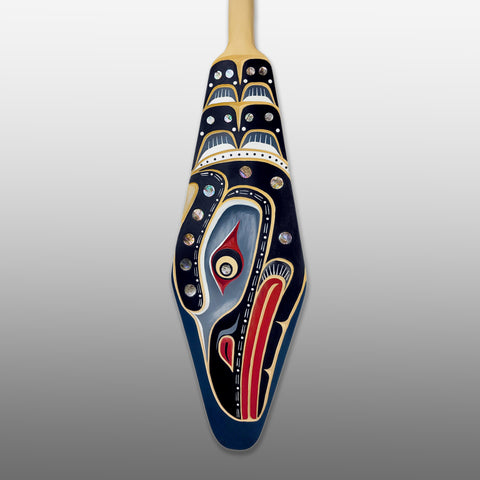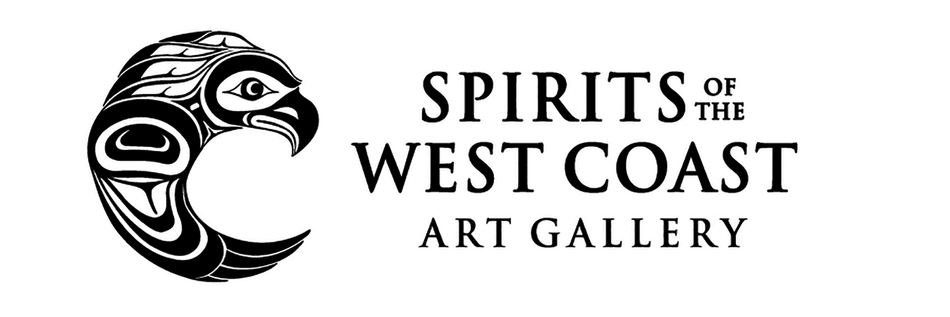Sandblasted Raven Paddle by Trevor Hunt
Paddles are an essential part of the Northwest Coast First Nations culture. Paddles can serve as both functional and decorative objects, and like canoes, paddles are made with pride.
Traditionally, carved paddles have been used to paddle and steer large cedar canoes in the coastal waters of the Northwest Pacific. They have also been used during ceremonial dances, as deadly weapons, and symbolically as representations of transportation, the sea, and life’s journey.

Loon Paddle by Bill Henderson
Today's West Coast Native Paddles are often magnificently carved and painted with depictions of traditional stories, symbols, and designs varying by nation. They may be adorned with inlays of abalone, mother of pearl, or other significant materials. While often still functional, paddles today are mostly created as fine works of art. The paddle may vary in shape and size, depending on who is using it. This is predominantly because men and women tend to stroke the water differently; a woman’s stroke is quicker and with more splashing, a man’s stroke is deeper and stronger. The shape of the paddle also varies depending on whether it’s used for paddling or steering, for ocean or river. A very broad paddle is used in the stern of the boat for steering. A sharply pointed paddle may be used for hunting, spearing fish, to enter the water more quietly, to secure the canoe to a bank, or as a weapon during warfare.
View other Northwest Coast Paddle designs here.





